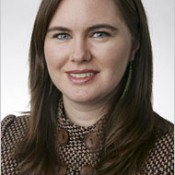Mobile, location, data
Three words: mobile, location, and data.
Mobile
The mobile device is becoming ubiquitous. The statistics speak volumes:

- Worldwide, 428 million mobile phones were sold in the third quarter of 2012. Gartner predicts that in 2013 the mobile phone will overtake personal computers when it comes to accessing the web.
- About 85 percent of American adults now own a mobile phone. Forty-four percent of American adults own a smartphone. Of those who own a smartphone, 62% use it get news.
- Forty percent of those who access news on their mobile phone are getting more news now than they were before — these are active news consumers.
In 2013, we’ll see:
- More apps and more mobile experiences. We haven’t even hit the tip of this iceberg yet — there will be more mobile news apps developed next year and news organizations (legacy and non-legacy players) will develop new ways of providing a mobile news experience to the end user.
- More mobile apps for the journalist. This year we saw new tools to help the journalist to do their newsgathering and reporting while on the go with their mobile device, and we’ll continue to see the same trend in 2013. The difference will be that these apps will go beyond a single task (e.g. take a photo, edit a video or capture sound) and become multi-task apps that allow the reporter to do more.
Location
According to the Pew Internet & American Life Project, about 74 percent of smartphone owners access location-based information on their phone. Services like Foursquare and Google Maps are just the beginning of what is possible in providing location-aware services that allow mobile phone owners to see how location can provide different meaning and context for daily experiences.
In 2013, we will see more mobile apps with location-aware services. We will see more apps being developed in 2013 that will allow the user to incorporate their location into using the app and getting information — whether that is by zip code, address, or landmark. The developers of these apps most likely will come from outside the news industry — and driven by specific brands and/or products. This will pose a unique challenge to news organizations to innovate in order to keep pace.
Data
Data was the star in 2012 and will continue to be big in 2013. The difference will be the power of mapping data. We have seen the beginnings of how powerful data can be when mapped as part of a story or news coverage ranging from mapping crime data to location (at the street level) to mapping presidential election results to location (at the district, city, state, and national levels). In 2013, we will see:
- Mapping data software players. Currently, a number of mapping software companies that target news organizations with their services that allow them to map data to a location — that operate under the free and pay model. This trend will continue in 2013 and more players will enter the market focusing their services toward news organizations but also other media industries — entertainment, public relations, advertising to name a few.
- More data tools for analysis and presentation. As we noted in 2012, the number of services and products to help news organizations and journalists work with data to help tell a story will continue in 2013. The difference will be that there will be more tools coming out that can help with the analysis of large datasets and new forms of presenting that kind of data.



































